Formula E Still Hasn't Given Racing Fans a Reason to Care
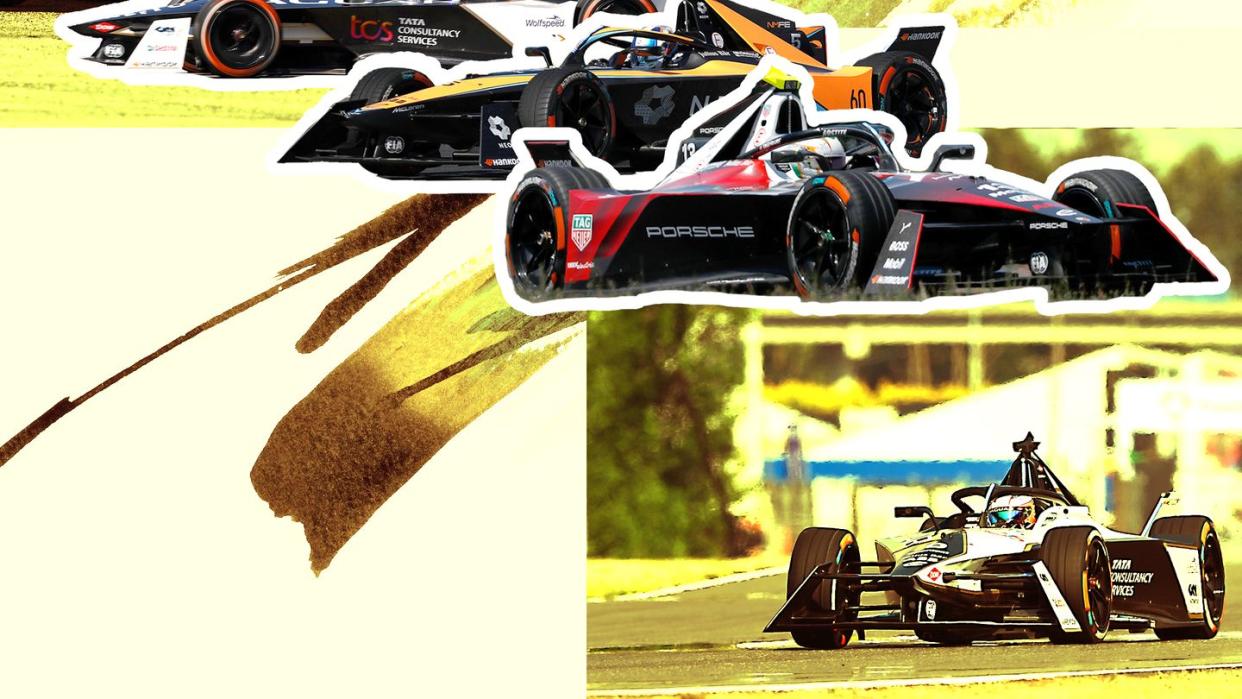
"Hearst Magazines and Yahoo may earn commission or revenue on some items through these links."
Across the lifetime of an oak tree, over the long history of a country, or the geological eons needed to make a natural diamond, nine years is not long. For a television series, a generation of a car, or the original run of the Beatles, though, nine years is about all you get when things go right.
Your opinion of Formula E will come down to whether or not you believe nine years to be a long time for a racing series. At this year's race in Portland, team executives, series officials, and even drivers stressed to Road & Track over and over again that a nine-year-old series is still young. Particularly with a timeline-breaking pandemic in the middle of it all. In the context of racing history, however, that’s hard to believe.
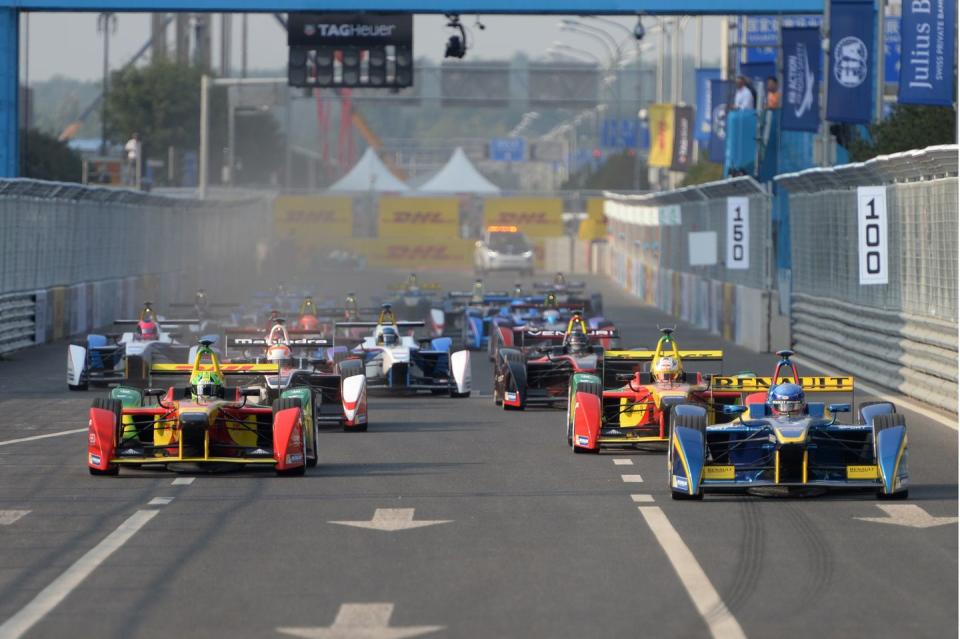
2023-24 will be the FIA Formula E World Championship's tenth season. As various competitors and stakeholders reminded me over the course of this year's Portland race weekend, the series looks very different now than it did when it debuted as the world's first major electric racing championship in 2014.
Back then, the series started with a bang. In the final corner of the first-ever all-electric open-wheel championship race, Nick Heidfeld attempted to catch and pass leader Nico Prost. He instead went rolling into a guardrail in spectacular fashion. The driver who actually did finish second in that race, Franck Montagny, was disqualified for the next one and suspended immediately after he failed a drug test.
That was just the beginning of a year of shuffling through drivers for the Formula E grid, which went on to resemble the grids of mercifully-forgotten lesser open-wheel championships like Superleague Formula and A1GP. Some 35 drivers competed across the 20 possible cars, a who's who of former IndyCar mid-packers, odd-moment open-wheel prospects, and star sports car drivers moonlighting when their schedule allowed.
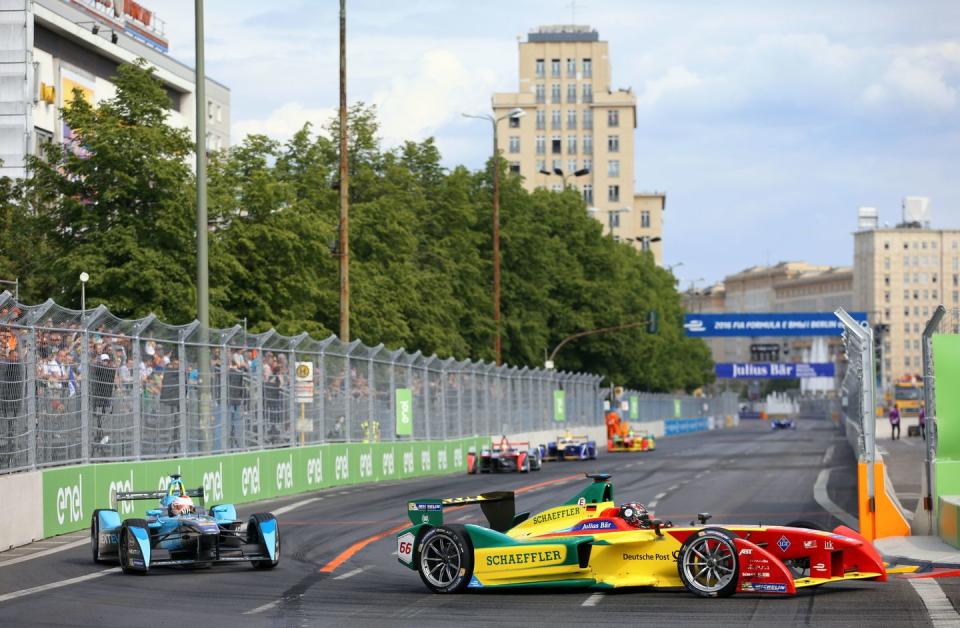
They raced for teams with names that seemed plucked from an unofficial F1 game that did not get the real licenses of any F1 teams: Jay Penske's Dragon Racing, Jarno Trulli's short-lived Trulli GP, and, at one point, a program called just China Racing. That eventually became NEXTEV TCR, a name that is, impressively, worse. The inaugural champion, Nelson Piquet Jr., was coming off a surprisingly successful stint in NASCAR's lower levels. Before that, he was more widely known for participating in a scandal called "Crashgate."
But Formula E grew up quickly. Officially, the only manufacturer-backed operation on the 2014-15 grid belonged to Mahindra. By 2018, that program was joined by Mercedes, BMW, Audi, Jaguar, Nissan, and Porsche. It has dropped its widely-mocked mid-race car switches, along with a wide variety of other oddities, and added the FIA's coveted World Championship title. One recent champion, Nyck de Vries, was briefly promoted to Formula 1 this season. Another, Stoffel Vandoorne, is a current reserve driver for two of Formula 1's ten teams.
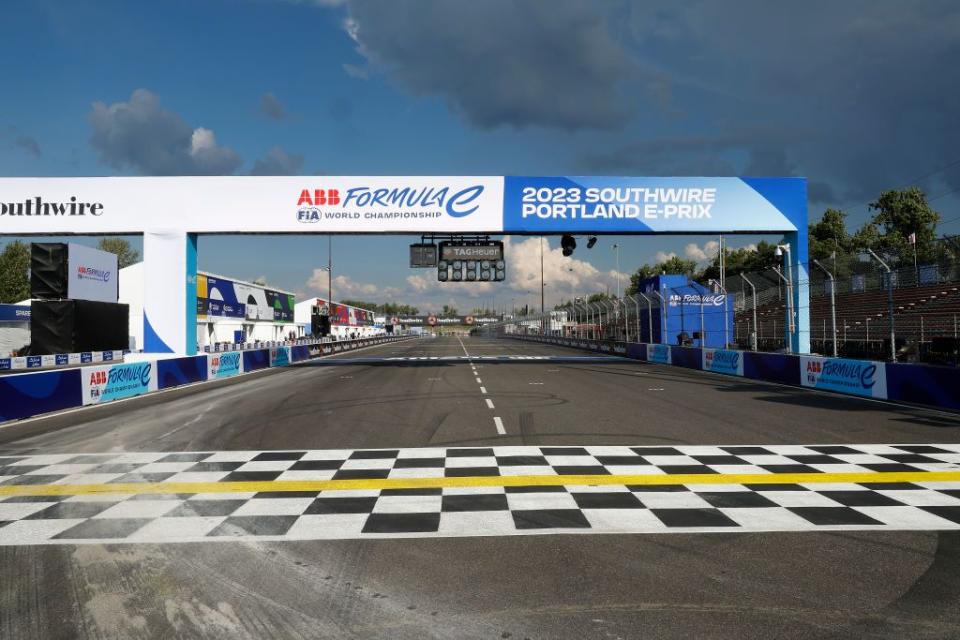
The day I saw Portland on the Formula E schedule, I knew I had to be there. The Portland International Raceway is an oddity, an underdeveloped track outside a smaller American media market that has successfully held relatively large crowds for both IndyCar and NASCAR Xfinity races with very few grandstands and fewer permanent facilities. Formula E has from its onset tried to gear its schedule around street races in or near major cities like London, New York, Paris, and Rome; in 2023, their American event was at a track at the northernmost end of a one-sport city's commuter rail line.
But Portland is a unique sports city. Not only is it all-in on its team in the far-from-globally-relevant Major League Soccer, it holds the leaguewide attendance record for the National Women Soccer League, too. The Trail Blazers, the NBA team that makes Portland a "one-sport" town among the big four American team sports leagues, were a disaster last season and awkwardly losing Damian Lillard, the best player in franchise history. And yet the Blazers still finished 10th in attendance among 30 NBA teams in 2022-23.
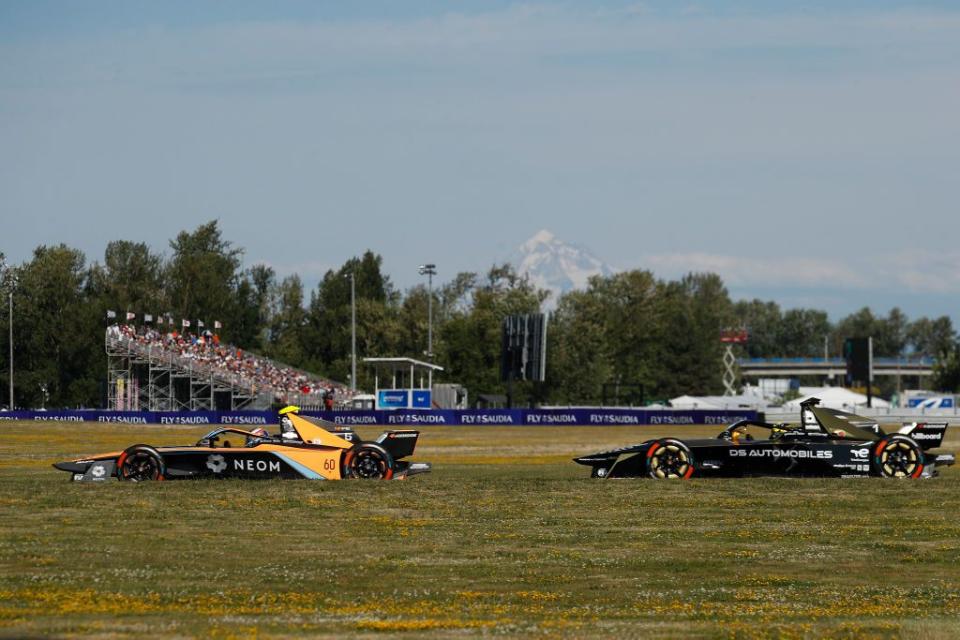
That makes it a fascinating city for Formula E, a championship that has always aimed high and rarely achieved its biggest aspirations; a modest target compared to London or Paris. The key is that a citywide interest in preservation of nature, a deep pride in anything that keeps the city globally relevant, and a commitment to the weird, make Portland a winnable town. A metro area where Formula E can take a foothold and never let go.
Whether or not that is Formula E's long-term goal in America is another story. Rumors put Formula E on a bigger stage in the U.S. again very soon, maybe even weaving through Los Angeles’s Dodger Stadium or SoFi Stadium parking lots. Portland is still on the 2023-24 calendar, but the 2024-25 season could have room for those types of events.
If growing in Portland is a goal, the first year was promising. The race sold out, albeit with at least one grandstand in the final corner complex covered by tarps. The series got the word out, too; two separate Uber drivers not only knew about the race but knew it was coming months in advance. One knew the unique design of the Formula E cars from seeing a show car around the city. An old friend who works for the city of Portland not only knew about the race but was offered tickets by his department.
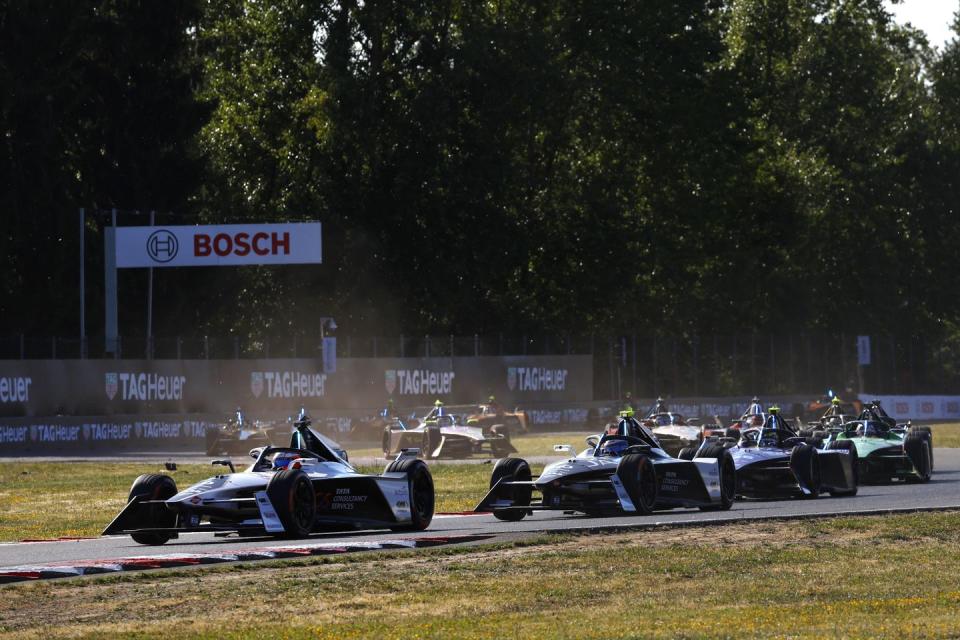
In pre-race conversations, the word of the weekend was "Peloton." Because Formula E drivers are given a relatively small allocation of actual power to use over the course of the race, they spent much of any race tactically conserving it for valuable pushes. So every Formula E race kind of runs like a fuel mileage-saving stint. It also means that cars bunch together in NASCAR-like packs to use the draft to their advantage. In practice, this looks like a bicycle race's peloton: an enormous crowd you can try to escape at any time, but only if you understand that the consequences will come back to you later.
Portland International Raceway is something like Monza with Voodoo Donuts. A right triangle of a chicane complex in turn 1 spoils what is mostly a run of fast, flowing corners, surrounded more by trees than by grandstands. On a NASCAR race weekend, howling V-8s echo through groves that are surprisingly quiet between sessions. Here, the Formula E peloton effect is more powerful than ever. As speeds approached a series-record 172 mph, this is a Portlandia perversion of Italy's famous Temple of Speed. I'm standing in Oregon watching something like a warped impression of the slipstream racing that Monza so famously hosted in the Sixties.
It is not a spectacle by any means. The pack charges by with none of the whoosh of fury you hear at Daytona, none of that unimaginable speed that makes the front straight at the Indianapolis 500 mystical. In the braking zone where I watched the race, the silence is only cut by air being displaced, grooved tires being pushed to their limits, and surprisingly loud noises of driveline components whirring along. It is compelling, but it lacks that undeniable gravity of a modern Formula 1 car flying out of a corner faster than your brain can process, shooting sparks all the way.
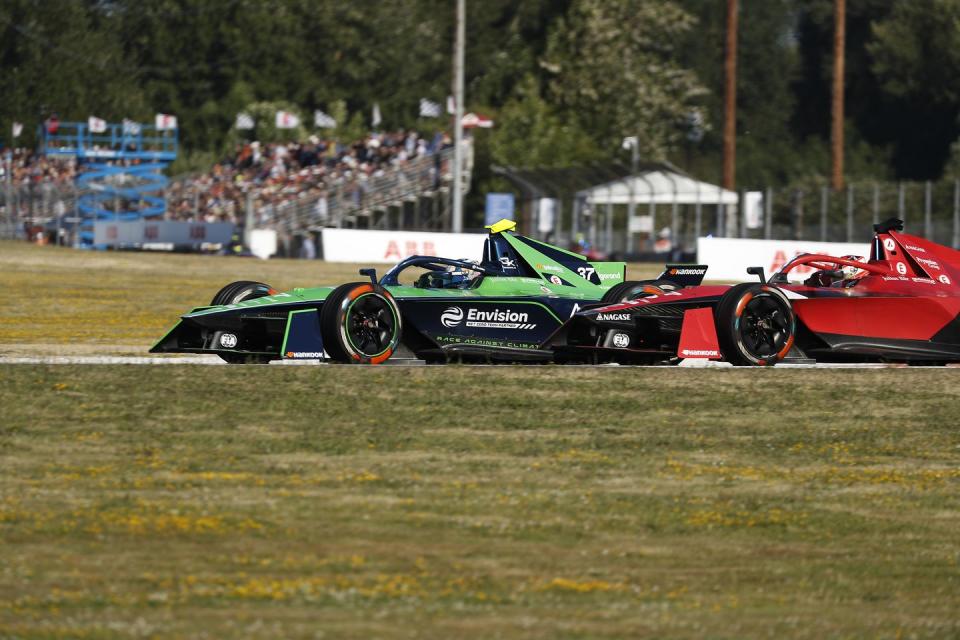
Formula E's racing is not all out, but it is exciting. Drivers in that peloton are there to conserve energy, not because they are stuck there in a NASCAR-style unbreakable draft. The group runs ten seconds off the qualifying pace in the earliest laps. Drivers are vying for second place for most of the race, where they can still get the help of a draft to conserve energy. Pole-sitter Jake Dennis led early, but he had to fade back if he had any hopes of winning later. That opened the door for Norman Nato to be the unlucky soul leading the field for much of the race, a spot he eventually lost to a battle between Antonio Felix da Costa and Nick Cassidy. In the end, Cassidy would take the lead back with two to go and never look back; da Costa would drop to third as he was passed again by Dennis.
The win was one of Cassidy's series-leading four on the year. This is Formula E, though, and if strategy dictates that you want to be second in a Formula E race, Dennis is the master of the series. His second at Portland was his third straight runner-up finish, one of his seven silver performances over what would eventually become his first-ever championship season.
All of it was interesting and compelling to a more interested fan like me, even as the series threw Mario Kart-style "Attack Zone" activation stripes projected only on television and head-to-head qualifying at you over the course of a long race day. For a newer and more casual fan just looking for a day of watching race cars fight for a win, a fuel mileage race without either the sounds of burning fuel or visuals of daring speed is a more questionable sell.
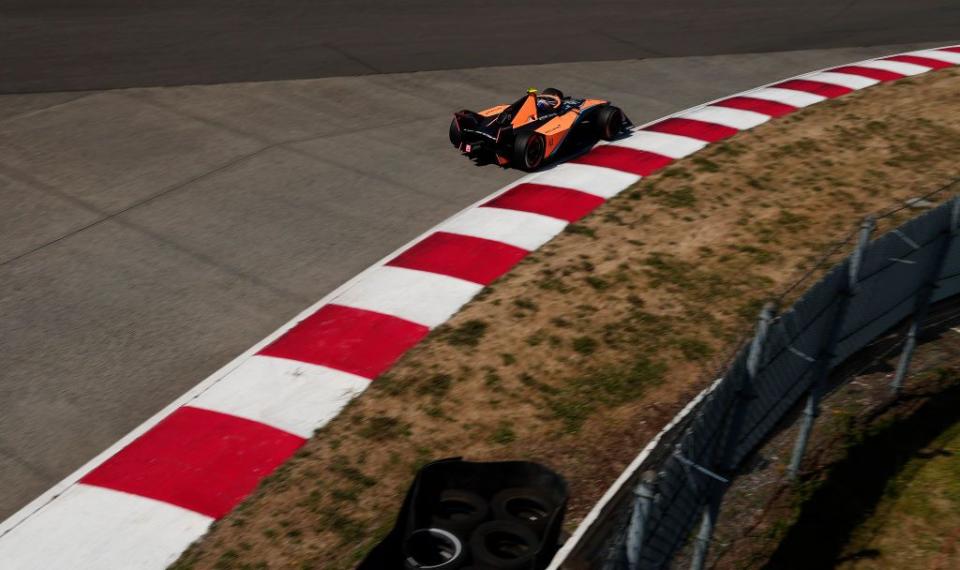
That lack of spectacle is obvious to just about everyone, including recently appointed series CEO Jeff Dodds. His immediate plan for the series calls for quick improvements to the existing car, although those improvements are not quite as exciting as you might hope.
The lack of power available for races is being addressed through in-race charging, something promised for this past season before production delays held it back. The optics of a long charge are a problem, though, and only 30 seconds of powerful 600-kW charging will be available to teams during races. That means just 10 percent of the car's 39-kWh battery capacity can be added back, far from enough to end battery conservation racing. The front powertrain units currently in use only to regenerate power under braking are also expected to be activated for power output soon, bringing the current car's lap times down and adding two more drive wheels. That should make qualifying more exciting, but the relatively small battery still limits how much power can actually be used during a race.
The expected upgrades to the current Generation 3 car are a stopgap. The promise is from the category's fourth generation of car, one due in 2026 and expected to be headlined by both improvements on overall power and battery capacity. That, in theory, will deliver the speeds expected from a modern auto-racing series.
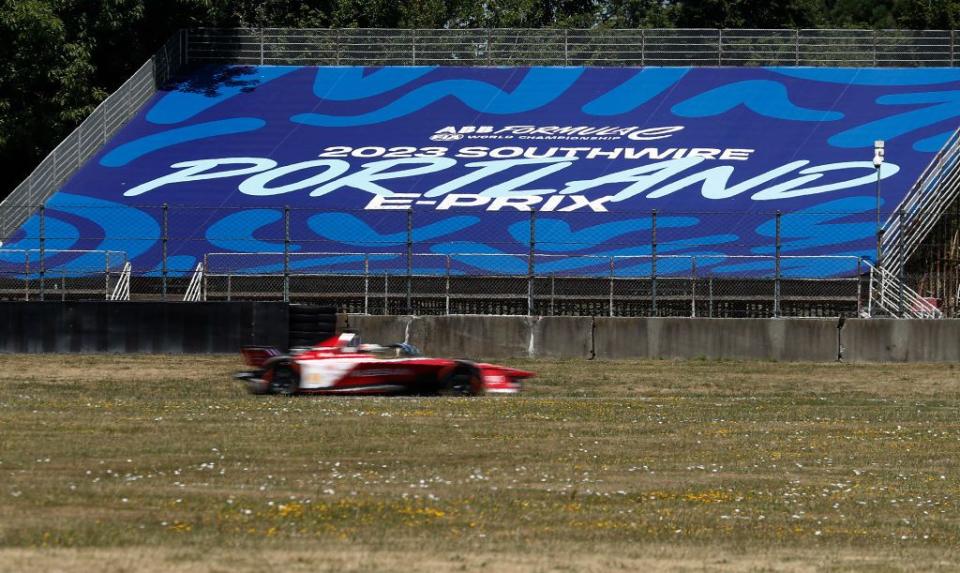
If you have followed Formula E, that refrain will sound very familiar. The update to the Generation 3 cars will mark the third major refresh the series has seen, and then the Gen 4 car set for the 2026/27 season will represent the fourth. The Gen 2 car arrived in 2018, greatly increasing the overall speed of the cars in the series and eliminating the mid-race "car swap" that was the source of so many jokes in the category's earliest years. The Gen 3, which debuted this year, bumps horsepower up to 470 in qualifying and 402 in races from a meager 250 hp delivered by the first-generation car.
In the same time, electric cars actually sold to consumers have found overwhelming sums 0f horsepower thanks to massive battery packs and multi-motor setups that burn through their huge storages of power quickly. At the top of the market, Rimac's 1914-hp Nevera hypercar can lap the 'Ring in 7:05 and get from 0 to 248 mph and back again in under 30 seconds. Further down the market, EV horsepower is almost cheap; you can buy a Tesla with over 1000 hp for $90,000 (or $86,o00, if you prefer to use Tesla's misleading pricing structure that includes "expected gas savings over three years") so long as you are willing to put up with owning a 2023 Tesla product. Even the Kia EV6, a crossover built by Kia, can be had in a 576 hp GT trim.
Reflecting the spectacular nature of these consumer-facing EVs has been a struggle for Formula E, one that Dodds has aggressively tried to match in recent months. He spoke to Road & Track about finding ways to showcase what the current car can do during the Portland ePrix weekend, noting that it was something the series has failed to capitalize on through its first nine years:
"I don't think we've done that properly yet. At every point, the car needs to get, let's be honest, faster and faster and faster. We also don't show the full capacity of these cars, or potentially the cars today, we just don't do that. I think we need to do that quite soon. I think we need to take these cars out to show people what the acceleration [from] 0-100 could look like if you unshackled it, to show what it could do, but I don't think that would lead to the best racing."
That balance will determine how much faster these cars can actually get in the near future. Dodds continued:
"We want the cars to be specified in a way that delivers great racing, but we also need to show people what the power and potential of what an electric car is. So I'm very keen to take some of the shackles off these cars and, quite quickly, show people what they're capable of. Not because I want to compare people from a Formula 1 car, I don't want to do that, but the reality is that everyone I speak to wants to do that for me. We don't set the cars up for that, but we can show people how it compares."
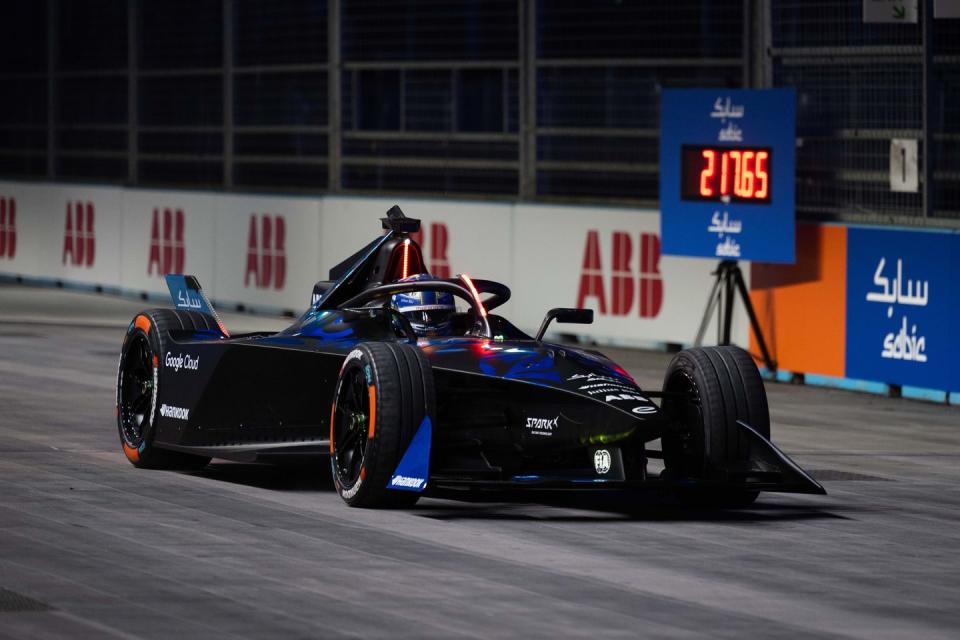
A month later, he delivered on that promise with an indoor land speed record of 135.9 mph. That was set by a car called "Gen Beta," a variant of the Gen 3 car with an activated front motor and a little additional aerodynamic and tire help to get away from standards the series sets on a race weekend for other reasons. That car got up to speed with help from an active front motor, producing a peak output of 536 hp. While the number is respectable, it still lags behind road cars like the upcoming 641-hp Hyundai Ioniq 5 N, which, to reiterate, is a regular road car that can fit a family of five, and is also a Hyundai.
Power goes up with the next update too, though. Not only is a fourth-generation car planned for 2026, suppliers have already been named and reports already indicate a peak output of an impressive 805 hp. The total output would likely be reduced outside of qualifying, but the number is a big one. It is also two car refreshes from actually showing up on a track in front of fans. The cars are getting "faster and faster and faster," just as Dodds promised, but the really exciting stuff still seems so far away.
Formula E also lacks a major American manufacturer, although the Franco-German-American Stellantis alliance is represented twice over with Maserati and DS. Is there room for an American brand like Ford or GM to supplement their recently-announced F1 programs and join the grid in Formula E? Dodds says there is a spot available, and at a competitive price.
“We actually have capacity on the grid for a 12th team. The cost of entry to Formula E offers strong value at a starting price of 30 million euros for a team franchise with an operating cost cap of 13 million euros per season, less than a tenth of F1, for example."
Why haven't we seen all that much American representation? Dodd explains that, well, they haven't expressed all that much interest in FE:
"We are being highly selective with who we speak to about that 12th spot, which is not limited to traditional OEMs. A U.S. manufacturer would be great for the championship, but up to this point it’s been the manufacturers with more accelerated EV roll-out plans that have been more proactive in reaching out to us.”
As the series learned when Mercedes, Porsche, Audi, and BMW all joined the series at once, brand names alone will not make or break Formula E. For now, the category's focus is on improving what its current competitors put on track.
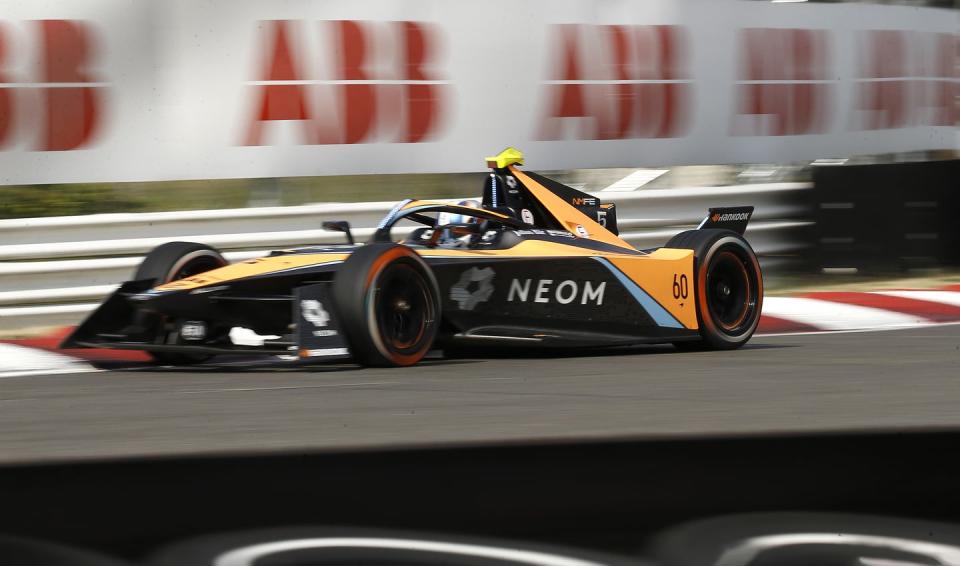
Here's the thing, though: Formula E has the time.
Formula E has exclusive license to host a FIA-sanctioned electric championship through 2039. Figures around the series quote the number like a trump card, the singular thing Formula E has that nobody else can match. If the future of auto racing is battery electric vehicles, the championship holds the winning hand in auto racing's electrification in both the near and distant future.
Even if that exclusivity were to suddenly disappear the day Formula 1 decides it wants to race EVs, Formula E will have had a decade or two of first-hand experience building a championship around EVs. It will also have the unique experience of building a championship around its own values of sustainability, not just integrating sustainability goals into something that already exists.
Whether or not it matters to fans, that is hugely valuable to manufacturers. If you are a brand like Porsche, Formula E lets you race track-ready EVs while you sell them. Nissan only offers EVs aimed at a wider audience right now, but Formula E lets the company show that audience that its electric powertrains are proven on track without compromising on the environmental value of going electric.
McLaren only sells hybrids right now, not EVs, but team principal Ian James tells Road & Track that the team is just starting to share its lessons learned in Formula E with the production automotive side of the company:
"It's interesting. McLaren automotive are now looking at how their portfolio is going to develop over the next few years. We're already starting dialogue with the automotive division to make sure we can collaborate going forward... When you talk about efficiency, when you talk about performance, the challenges on the racing side are mirrored on the automotive side as well. So you can very quickly learn from each other the approaches that you take, the problems you have to resolve. What I anticipate is that we'll pivot into something where we can start to share technology as well. We're right at the start of that journey at the moment."
All of that matters. The progress has been achingly slow, and people involved seem to be oddly content with that pace in public, but the progress is there.
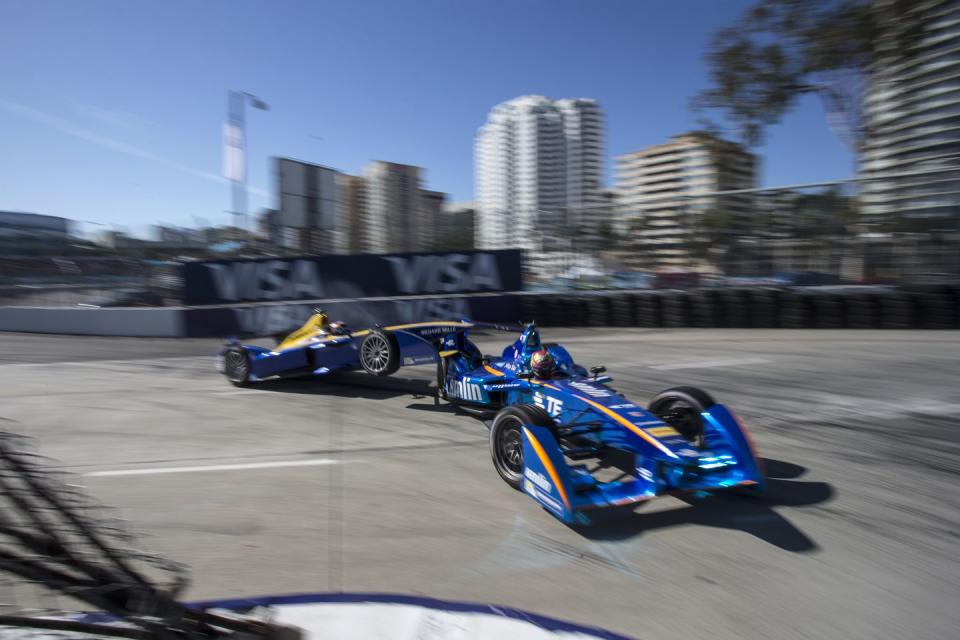
If you want to see just how far Formula E has come, look at what Sam Smith wrote here at Road & Track after attending a second-season race at Long Beach in 2016. He saw a Formula E with a boring spec car washed out by the endless jams played by a DJ called the Formula EJ even during the race. That version of the championship's embarrassments did not end at the mid-race car swap. It also had a fan vote to give more popular drivers a competitive advantage, top speeds under 140 mph, and tracks fairly clearly designed to hide as many of the car's problems as possible.
That Long Beach ePrix (yes, the races are actually called an ePrix) was also my first Formula E race. On the day before the actual event, Alain Prost was wandering around to seemingly bask in the freedom of a racing paddock with so few corporate guests and hangers-on that he could meander without being interrupted. Then-team co-owner Leonardo DiCaprio still had an entourage on race day, but just about everyone else seemed unaware that this was an event that would be attended by the public in any way. Attendance apparently came in at 17,000, but the track looked empty to anyone who has attended the massively popular IndyCar and IMSA race weekend.
Fan disinterest was captured well by an onlooker watching practice from a balcony overlooking the track outside the gates. He asked me why the IndyCars were so quiet this year. When I informed him that this was the second-ever Formula E race in America and he could attend the rest of the day for just $30, he asked why anyone would ever want to see an electric car race. In a beautiful bit of poetry, the race was also sponsored by Faraday Future. If Formula E's timelines are long, Faraday Future's are endless; seven years after that race, the brand's first production car finally went on sale earlier this year.
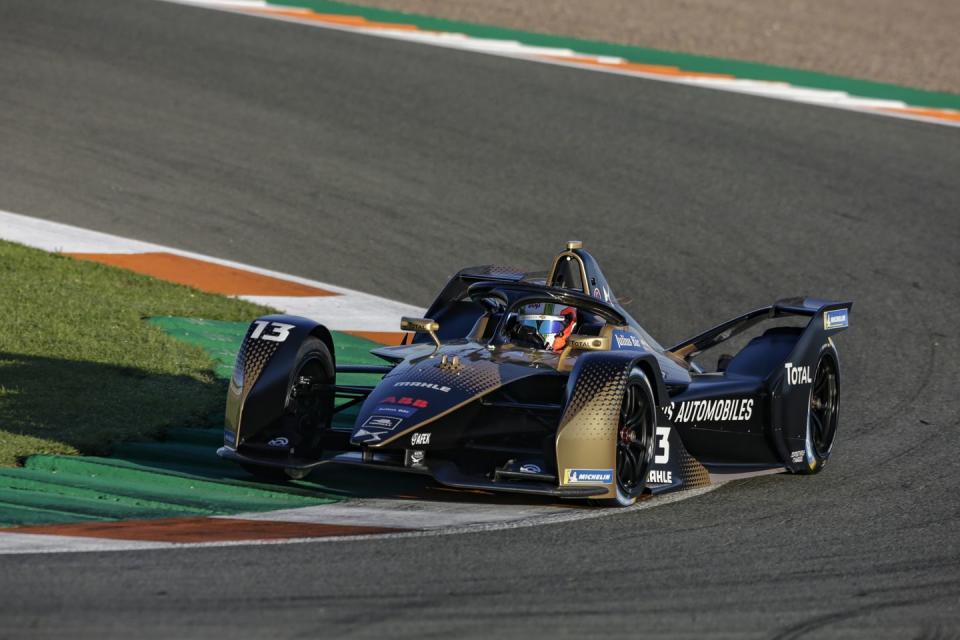
That incomplete era was followed by the leap to Gen 2 in 2018, removing in-race car swaps and greatly increasing performance. The 2019-2020 series champion Antonio Felix da Costa, a current Porsche driver who had been racing in Formula E since its second race, told Road & Track that those Gen 1 cars really weren't being taken seriously in the racing establishment. Things changed with Gen 2, and that first new car was a major turning point in the growth of the series.
"We got more range, more power, less weight... The cars looked better, they were faster. That was a big step for Formula E to gain the credibility that we wall wanted it to get. I was an F1 reserve driver at that time and I could see it during the Gen 1, the F1 guys and drivers I was working with were not respecting Formula E at all. When that transition happened, they were starting to watch it, they would then congratulate you when you won a race. It gained the respect that I thought it deserved."
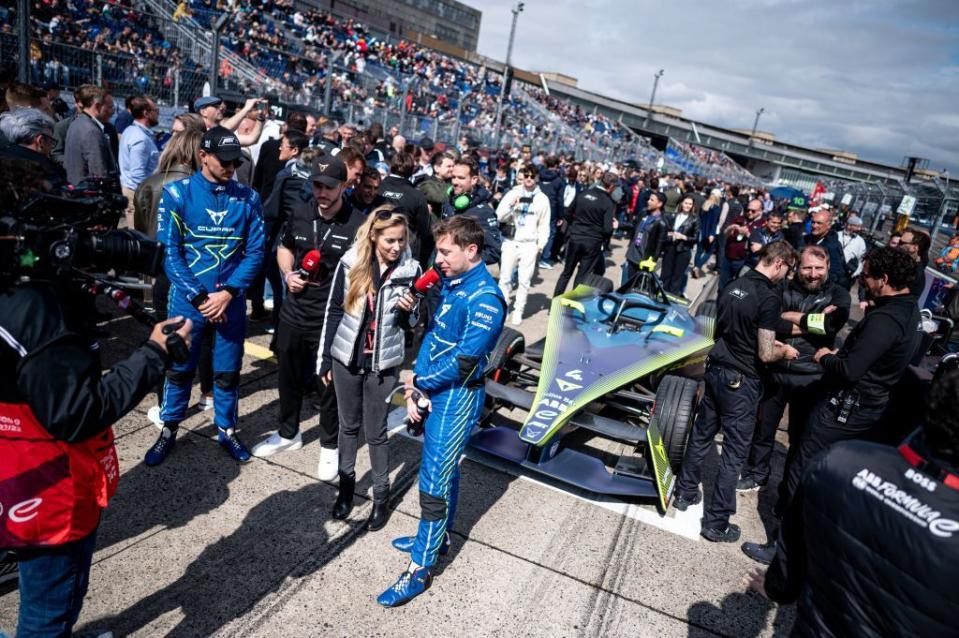
In the first year of generation 3, the Formula E we see in 2023 is a bit more lively. With the fan vote, the car change, and the Formula EJ all relegated to the dustbin of history, quirks like "knockout qualifying" and "Attack Mode" seem more like quaint charms and less like humiliations forced upon the otherwise very serious drivers and teams trying to win these races.
Like IndyCar, this is a series with an incredible depth of talent headlined by starring names you would recognize from the F1 ladder and those who made their name later in their careers alike. Unlike IndyCar, the entire grid is made up of drivers paid to be there. Not one driver in the field is publicly known to have their ride due to the financial aid of a sponsor, a wealthy parent, or, as you might see in Formula 1, a parent who both owns the team and a huge chunk of the car company it is named after. Look hard enough at any other championship and Formula E might be the only series in the world that can hold that claim.
The early commitment to environmentally friendly transport has stuck around, too. This is still a flat pack championship that is disassembled and rebuilt at every new track, as you will learn the moment you try to connect to the media center WiFi and watch as your laptop panics to decide if it is in Jakarta, Monaco, or Portland. Even the hospitality is portable. Sure, the McLaren team's transportation boxes might still have a little bit of leftover Mercedes branding, but the cars still all go back into the boxes together and still all get unpacked together alongside the roomy paddock and the TV studio's odd little lounge area before every race. While other categories may keep their connection to clowns and trapeze strictly metaphorical, this series not only actually travels like a circus but creates value for teams in the process.
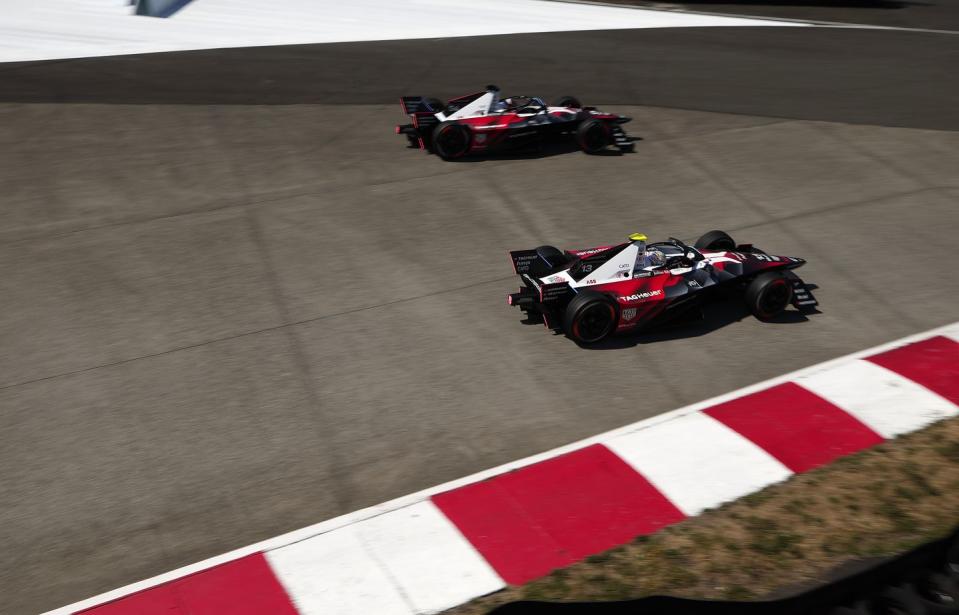
All of that advancement needs to be put in another context, though. In 2016, a downward spiral for all of auto racing saw NASCAR seemingly changing its downforce packages at random in search of better racing and Formula 1 desperately seeking out tire compounds bad enough to force teams into mistakes. It was the era of Audi quitting the 24 Hours of Le Mans and IndyCar letting Honda stack as many wings as the brand's engineers wanted on their cars in pursuit of some level of brand identity. That is all recent history. The seven years that followed have gone a very different direction.
In the years since, all of auto racing has made significant progress. Formula 1's aero regulation changes have helped racing on track, but the bigger development has been a Drive to Survive series that has not just bolstered global interest but almost single-handedly made the United States a crucial market for the sport. IndyCar is overflowing with young talent from around the world, all racing in cars that actually look pretty good despite being nearly identical underneath their aero kits. NASCAR's new car has some problems, but it can put on an exciting race on a 1.5-mile track. Audi never came back to Le Mans, but an unbelievable eight major manufacturers will compete with factory-backed prototypes in the upcoming 2024 race.
This is not a rising tide lifting all boats; this is a series of crises tied to a series of independent variables actually solved by these older championships. In that context, and with so much to fix, Formula E's improvements on track seem lacking.
Not only has it not become bigger than F1, as Richard Branson figured it would by 2020, it seems to be losing momentum as quickly as it can gain it. The series still has major factory involvement from Nissan, Jaguar, Porsche, Stellantis, and the EV start-up NIO, but it has lost three of its four biggest factory acquisitions: Mercedes, BMW, and Audi. Formula E has a new marquee race in Tokyo next season, but the event in Brooklyn meant to bring the series into New York City is gone.
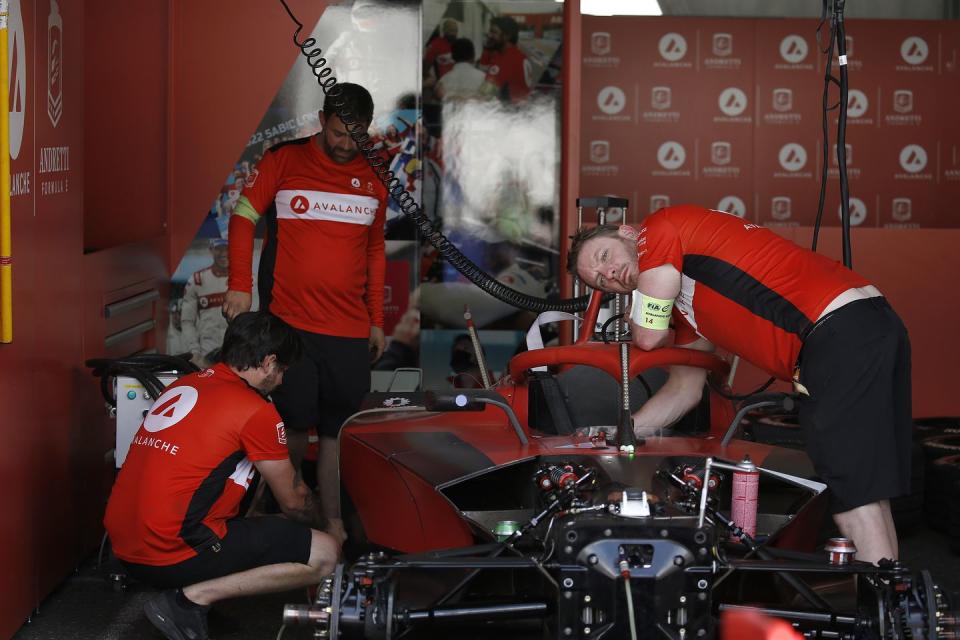
The series is more serious than ever, the product on track is faster, and Formula E itself has an established identity that goes beyond EVs and the restating that everything is still so new. That is proof that the category is on the right track, just not nearly far enough down it. The incremental progress looks even worse when so much of it disappears just a few years later, all while other championships that represent much bigger, slower ships to turn around move forward without any such problem.
For American car enthusiasts, the group that makes up most of both the staff and readership of this website, Formula E is not exactly on the tip of the tongue. I watch most of the Formula E calendar, but my sources in the world of racing talk about Australian touring cars more often than the world championship of electric open-wheel racing.
When asking questions about a perceived lack of interest throughout the Portland weekend, I was sometimes met with blank stares. After all, the series boasts about an enormous global audience of 334 million fans, helped by an apparent 30 percent year-on-year increase in American interest. The 2020 U.S. census claimed that the total population of the United States was 331 million. In the absence of any available audience data not provided by Formula E, we can be left to assume that it has one of the quietest and largest silent majorities in history.
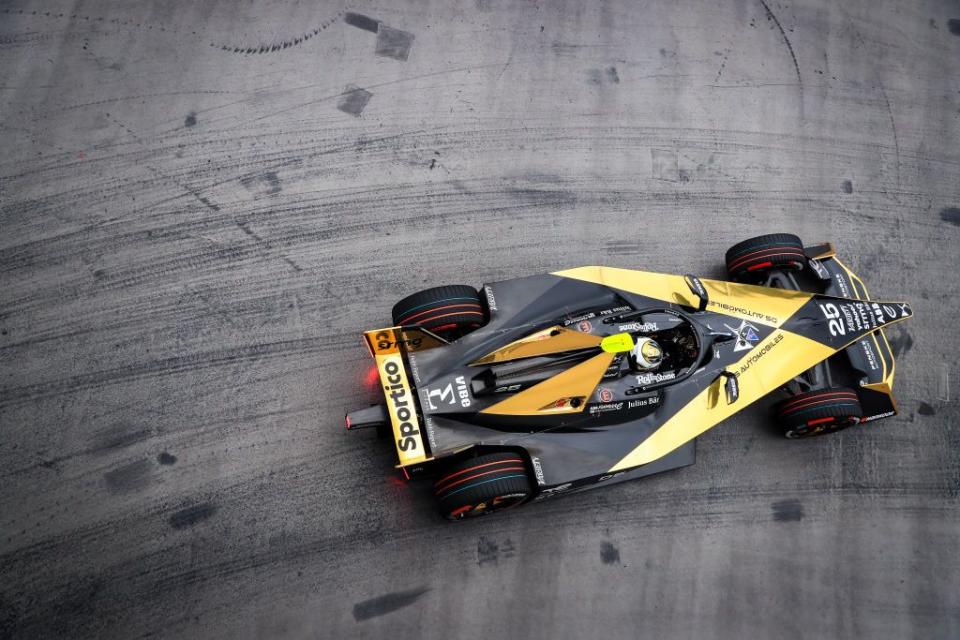
Formula E's next steps are paradoxical. The series needs the cars to be faster and it needs the races to be less focused on saving energy, but those two goals are in direct competition. It needs a home run race out of its events in A-tier global markets like Paris and Tokyo, but it cannot risk losing ground-level fan support in cities without Olympic games in their history like Jakarta and, now, Portland. The manufacturers already in the series need to feel like they have a seat at the table, but their interests have to be ignored if they go against the goals of developing what these cars actually do on track.
Fortunately, plans to build toward all of these goals seem to have already been put into motion. Continued gradual improvement is leading this championship to something bigger and better than what it is today, something that should excite car enthusiasts who have quickly embraced the things that make EVs uniquely spectacular and racing fans who want to see all-out battles for the win on track alike. There is just one problem: Over the first nine years of Formula E, those kinds of plans have led to little more than slow, steady progress occasionally delayed by missed opportunities and major setbacks. Rumors about the fourth-generation car promise a seriously exciting EV for a series that has already gotten by with some, frankly, boring and ugly ones. Is it enough? Is it coming soon enough? Or will a powerful car promised in 2026 be too little, too late?
Formula E lacks a secret weapon that both American open-wheel racing and sports car racing have, too. The often-forgotten truth of the biggest championships in those categories is that they are not actually all that old themselves; IndyCar dates back to the IRL's founding in 1996, IMSA to the American Le Mans Series in 1999, and the FIA World Endurance Championship to 2010's Intercontinental Le Mans Cup. (The original World Sports Car Championship raced at Le Mans and elsewhere from 1953 mostly uninterrupted until it folded during the lean recession year of 1992, if you were wondering.) All of them survived all those regenerations because they have a tentpole event, a race so big and so potentially profitable that a category practically must exist to race it.
The Indianapolis 500 is that for open wheelers, Le Mans is that in Europe, and a small handful of long-living American endurance races are that for the North American sports car scene. Formula E has no such history to claim, nothing that will preserve the idea of electric open-wheelers racing around the world from a European base if the organization were to fold tomorrow. Races in Rome, Monaco, Jakarta, and now Tokyo all have serious promise to become events that last, but promise is not the same thing as a century-old regional institution.
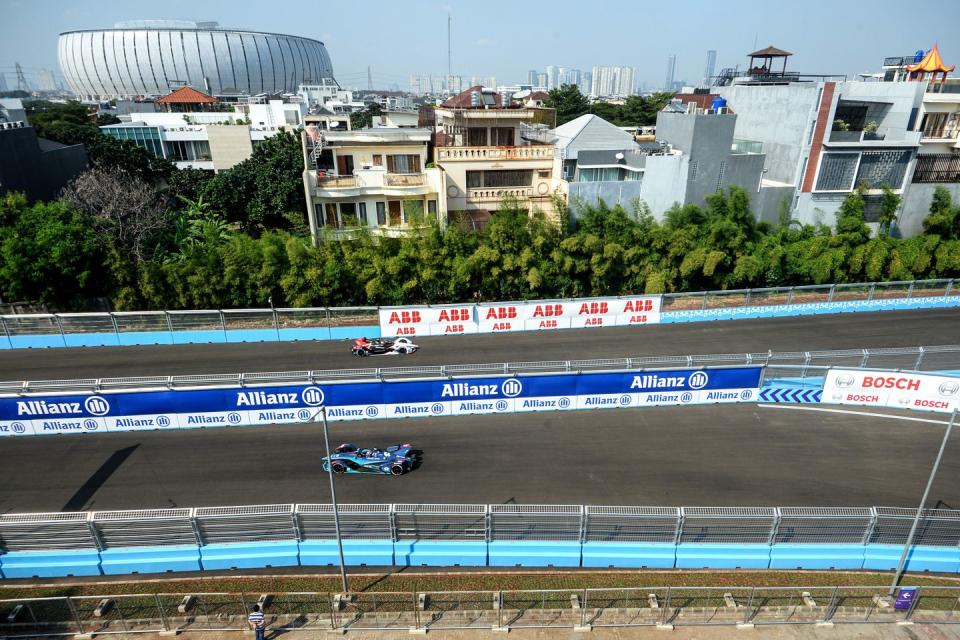
A commitment to the dream of taking over big cities may actually hinder this. The Indianapolis 500 and 24 Hours of Le Mans were built off the spectacle of their speed and length, not their placement at the heart of their also-ran media markets in Indiana and Pays de la Loire. That simple recipe not only changed how spectators at those races viewed auto racing, they changed how those fans looked at gas-powered cars entirely. Can Formula E build an event like that for EVs? Would it be as simple as offering a massive cash prize to accomplish something that is very obviously difficult, as it was when those races began? Does it mean doubling down on cities more like Portland than London to create a meaningful annual splash in a city it can conquer, reflecting the way Indianapolis is dominated by its 500-mile race? If it wants a tentpole, those are the kinds of questions Formula E's leadership needs to be asking.
Even if the series is able to weather these storms without running out of money or losing its biggest stakeholders to competing championships, 2039 is closer than Formula E thinks. Its first nine years may have been a slow ramp-up, but the walls have been closing in the whole time. If it does not have a hook beyond a longer history racing EVs when its exclusivity runs out, it will not have a leg to stand on. Formula E has to establish itself as more than just something that perpetually, eventually will be more exciting when the next car debuts. If that happens, this really might still be the future of racing.
You Might Also Like

